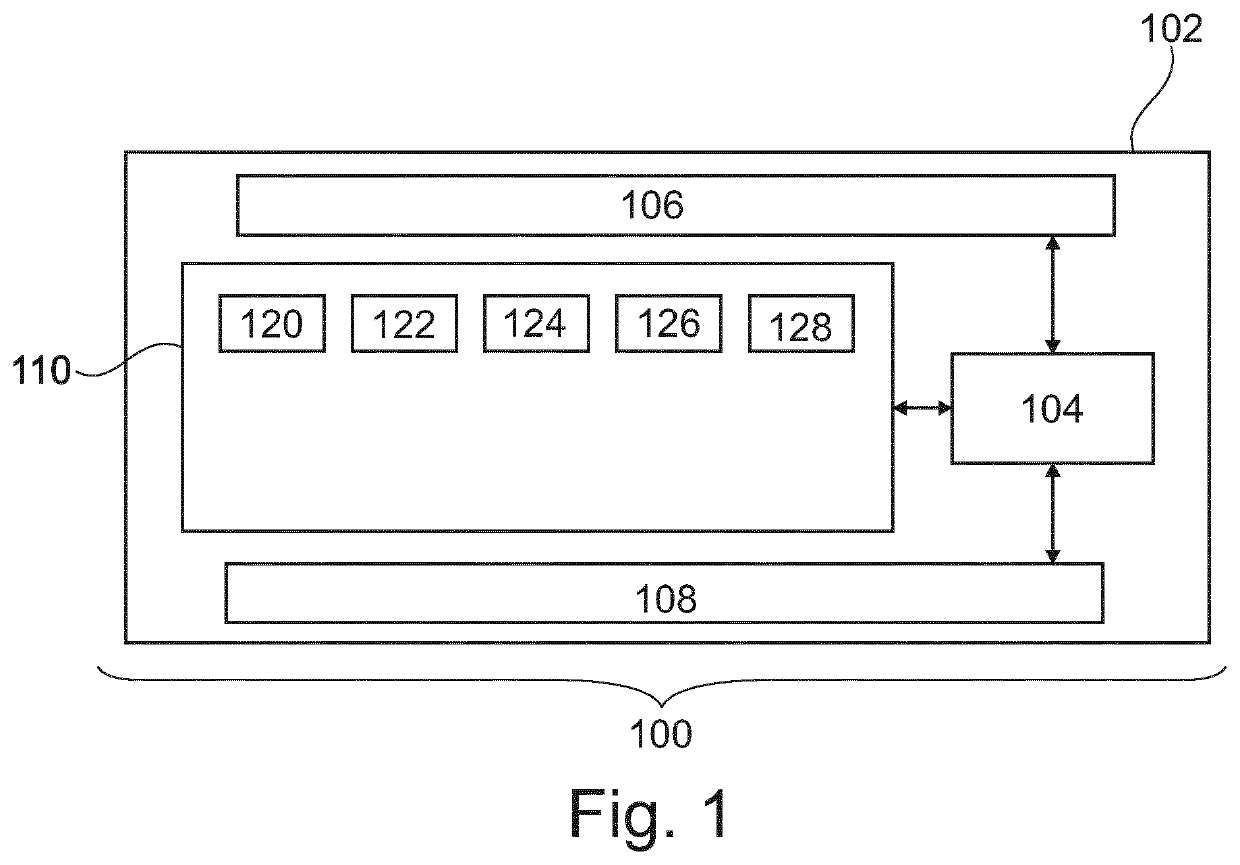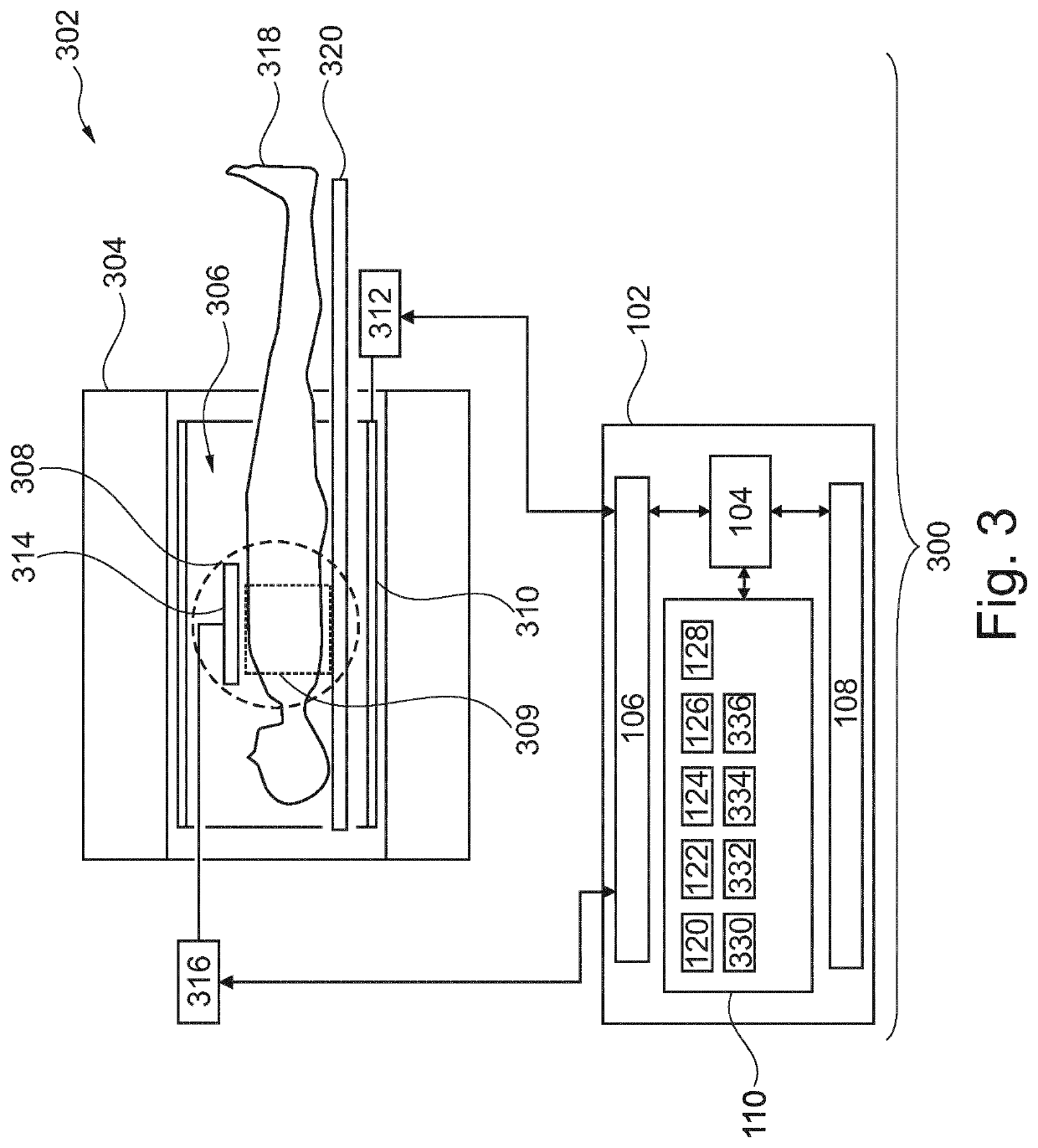Synthetic four-dimensional computed tomographic image generation
a computed tomographic image and synthetic technology, applied in the field of magnetic resonance imaging, can solve problems such as blurred structure boundaries
- Summary
- Abstract
- Description
- Claims
- Application Information
AI Technical Summary
Benefits of technology
Problems solved by technology
Method used
Image
Examples
Embodiment Construction
[0066]Like numbered elements in these figures are either equivalent elements or perform the same function. Elements which have been discussed previously will not necessarily be discussed in later figures if the function is equivalent.
[0067]FIG. 1 illustrates an example of a medical system 100. The medical system 100 is shown as comprising a computer 102. The computer 102 comprises a processor 104. The processor 104 is intended to represent one or more processors with one or more processing cores. The processor 104 could for example be distributed amongst multiple computer systems. The processor 104 is connected to an optional hardware interface. The hardware interface 106 may for example be a network interface that enables the processor 104 to communicate with and / or control additional components of the medical system 100. The processor 104 is further shown as being connected to a user interface 108. The user interface 108 may for example optionally comprise a display, user interfac...
PUM
 Login to View More
Login to View More Abstract
Description
Claims
Application Information
 Login to View More
Login to View More - R&D
- Intellectual Property
- Life Sciences
- Materials
- Tech Scout
- Unparalleled Data Quality
- Higher Quality Content
- 60% Fewer Hallucinations
Browse by: Latest US Patents, China's latest patents, Technical Efficacy Thesaurus, Application Domain, Technology Topic, Popular Technical Reports.
© 2025 PatSnap. All rights reserved.Legal|Privacy policy|Modern Slavery Act Transparency Statement|Sitemap|About US| Contact US: help@patsnap.com



